MXene fiber refractive index sensor
QQ Academic Group: 1092348845
Detailed

【Research Background】
In many biochemical applications, such as biological effects, chemical reactions, and changes in solute concentration in liquids, accurate detection of refractive index (RI) plays a vital role, as these biochemical processes are often accompanied by changes in RI. However, most of the changes in refractive index are so small that they are difficult to detect. Therefore, researchers have provided various types of RI sensitive sensors for biochemical detection. Even with technologies such as surface plasmon resonance (SPR) and surface-enhanced Raman scattering (SERS), traditional fiber-optic biosensors still do not have sufficient sensitivity to detect RI changes in the reaction. Recently, various new two-dimensional materials have been applied to biosensors to improve their performance. Modification of two-dimensional materials makes them more sensitive and more functional. Although many experimental studies have shown that the existence of two-dimensional materials has improved the performance of biosensors, currently, most biosensors modified by two-dimensional materials are still in the theoretical research stage. Among many two-dimensional materials, MXenes has attracted wide attention due to its excellent performance. But its report in fiber optic biosensors is relatively few.
[Achievement Profile]
Recently, Professor Zhang Huan and Professor Xuejin Li of Shenzhen University published a research paper titled Refractive Index Sensors Based on Ti3C2Tx MXene Fibers in the internationally renowned academic journal ACS Applied Nano Materials, which fully proved that fiber optic SPR sensors and fiber RI sensors have biological Under the premise of sensing capability, Ti3C2Tx MXene nanosheets were prepared in this paper to improve the sensitivity of these two biosensors. By depositing MXene nanosheets, optical fiber SPR sensors and optical fiber RI sensors of different specifications were manufactured for enhanced sensitivity research. RI detection is used to quantify sensor performance improvements. The sensitivity of these two types of sensors has been improved to varying degrees. Among them, the optical fiber SPR sensor containing the highest concentration of MXene layer has the highest sensitivity improvement, reaching 29.9%, and the sensitivity of the optical fiber RI sensor is increased by more than 8 times. The mechanism of its sensitivity enhancement is related to the characteristics of MXene: rich surface functional groups, broadband optical absorption, and large specific surface area can enhance the interaction of incident light, MXene, and the biochemical sample to be measured. In view of the ideal increase in the sensitivity of fiber-optic biosensors, this work introduces new uses of MXene in biochemical sensing.
[Picture and text guide]

Figure 1. Flow chart of the preparation of Ti3C2Tx MXenes nanosheets.
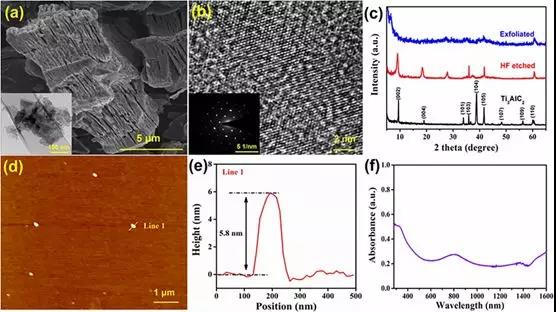
Figure 2. Material characterization of the samples used.

Figure 3. Schematic diagram of the fiber SCR sensor and fiber RI sensor after adding the MXene layer.
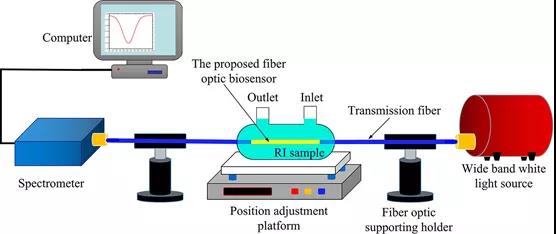
Figure 4. Schematic diagram of a sensing system based on MXene nanofiber based fiber optic sensors.
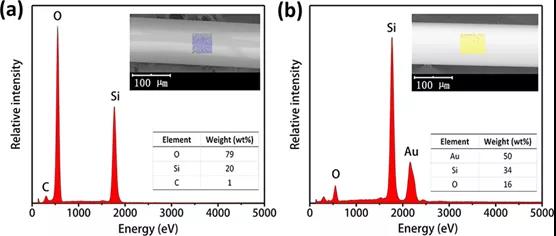
Figure 5. Comparison of EDS before and after gold film deposition on the cylindrical surface of a fiber optic sensor.
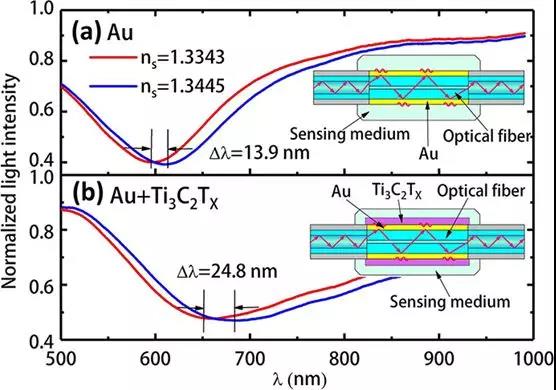
Figure 6. Normalized optical intensity of Au-film-based SPR sensors and sensors with MXene layers as a function of wavelength.
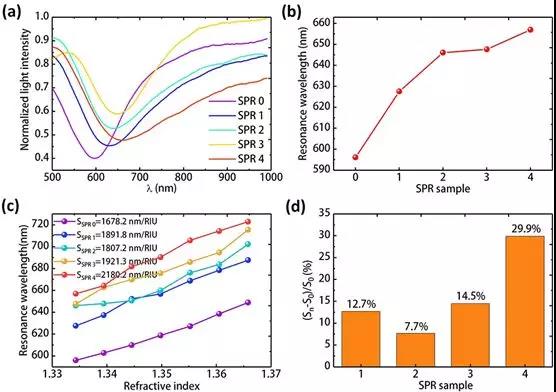
Figure 7. Demonstrates the relationship between changes in normalized light intensity, changes in resonance tilt, changes in sensitivity, and enhancement of sensitivity with different concentrations of MXene layers.

Figure 8. SEM image of an MXene nanosheet-based fiber RI sensor.
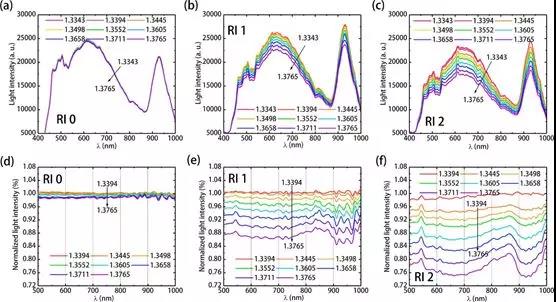
Figure 9. Spectra for detecting increased RI in different samples of a fiber-optic RI sensor with an MXene layer, and normalized spectra for detecting increased RI in different samples of the proposed fiber-optic RI sensor.

Fig. 10. Comparison of light absorption of transient waves on the surface of an optical fiber RI sensor with or without MXene layer.

Figure 11. Sensitivity of different samples of optical fiber RI sensor with MXene layer at different wavelengths.
[Summary of this article]
In this paper, Ti3C2Tx MXene nanosheets were prepared and deposited on two different fiber biosensor surfaces. A sensitivity enhancement study was performed on two sensors with MXene nanosheets, and the results showed that the brightness of the optical fiber SPR sensor increased by 30%, while the brightness of the optical fiber RI sensor increased by more than 8 times. The article reveals that for optical fiber SPR sensors, Ti3C2Tx MXene is a working window adjustment material, which promotes the spectral detection of these sensors; for optical fiber RI sensors, Ti3C2TxMXene is a broad-spectrum working material, which eliminates optical working wavelengths for this type of material. Limitations of sensors. This paper proposes two new fiber-optic biosensors that combine the advantages of MXene and fiber-optic sensors. They have small size, low power consumption, long transmission distance, anti-electromagnetic interference, easy adjustment of photoelectric performance, biochemical functions, good physical stability, and practical applications. Value and other advantages.
Literature link:
https://dx.doi.org/10.1021/acsanm.9b01889.
Source: MXene Frontier
- Previous: Without template synth
- Next: What is graphene?


 Application
Application
